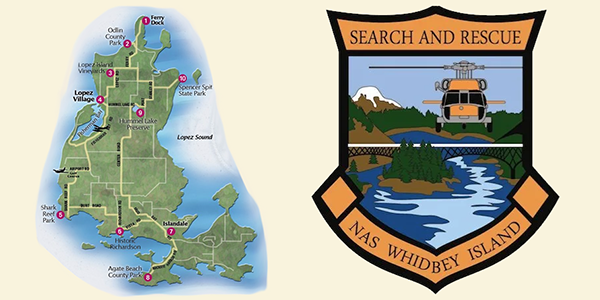||| FROM NAVAL AIR STATION WHIDBEY ISLAND |||
NAVAL AIR STATION WHIDBEY ISLAND, Wash. – A Search and Rescue (SAR) team from Naval Air Station (NAS) Whidbey Island conducted two medical evacuations (MEDEVAC) with three patients from Lopez Island October 28, 2021 when civilian helicopter MEDEVAC assets were unable to perform the missions because of weather.
At approximately 11:30 a.m. yesterday a SAR crew launched from Naval Air Station Whidbey Island to pick up a 57-year-old male patient suffering from a possible heart attack on Lopez Island. The patient was picked up at the Lopez Island Airport and transported to St. Joseph’s Medical Center in Bellingham, Wash.
As the SAR crew began to return to base they received another message for a MEDEVAC from Lopez Island. When they returned to Lopez they found a low layer of cloud over the airport, so the SAR crew elected to land directly at the UW Medicine Primary Care Clinic Lopez Island helipad. This required the local authorities to stop traffic near the clinic to keep drivers safe from the helicopter’s downwash.
Once on deck the SAR crew received two patients, a 75-year-old male with a possible heart attack and a 76-year-old male who had suffered multiple traumas from falling down a flight of stairs. They also took on a Lopez Island Fire Department paramedic who continued treatment of the trauma patient.
Both patients were transported to St. Joseph’s Medical Center and the paramedic was then taken back to Lopez Island.
Naval Air Station Whidbey Island SAR has conducted 44 missions this calendar year, which includes 10 MEDEVACs, 30 rescues, and four searches.
The Navy SAR unit operates three MH-60S helicopters from NAS Whidbey Island as search and rescue/medical evacuation (SAR/MEDEVAC) platforms for the EA-18G aircraft as well as other squadrons and personnel assigned to the installation. Pursuant to the National SAR Plan of the United States, the unit may also be used for civil SAR/MEDEVAC needs to the fullest extent practicable on a non-interference basis with primary military duties according to applicable national directives, plans, guidelines and agreements; specifically, the unit may launch in response to tasking by the Air Force Rescue Coordination Center (based on a Washington State Memorandum of Understanding) for inland missions, and/or tasking by the United States Coast Guard for all other aeronautical and maritime regions, when other assets are unavailable.
**If you are reading theOrcasonian for free, thank your fellow islanders. If you would like to support theOrcasonian CLICK HERE to set your modestly-priced, voluntary subscription. Otherwise, no worries; we’re happy to share with you.**








We are all so lucky to have the Navy SAR available when the private companies can’t fly. Go Navy!